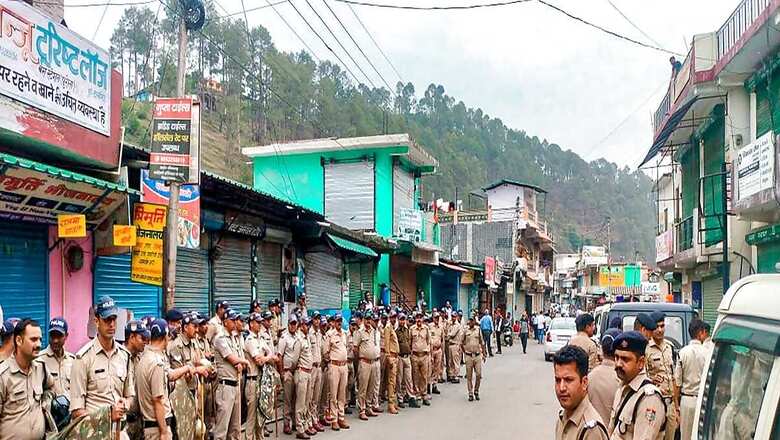
views
There is a good reason why Uttarakhand is known as ‘Devbhoomi’. About ten dozen Hindu religious spots are strewn across this sacred geography. With Haridwar, Rishikesh, Kedarnath, Badrinath, Gangotri, Yamunotri, Uttarkashi, Devprayag, Rudraprayag, Guptakashi, Gaumukh and a long string of iconic religious places, the state is the nerve centre of Bharat’s spiritual geography.
In the 2011 census, Hindus were roughly 83 percent of Uttarakhand’s population and Muslims were 14 percent. However, both locals and the state government have lately started flagging a demographic shift, especially around religious centres like Haridwar.
Recently, the kidnapping of a minor Hindu girl, allegations of love jihad and forceful conversions, led to a massive Hindu backlash in Purola town. Saffron rallies came out, shops of Muslim traders were marked, and they were told to leave.
Two years ago, the BJP government in Uttarakhand resolved to remove illegal encroachments by batches of migrants arriving and settling down. Masjids and minarets suddenly started adorning townscapes. The government officially stated that it was investigating criminal elements who have come in and illegal land deals.
There have been 18 complaints of love jihad and conversions since 2018 till date under the Freedom of Religion Act. Now, the Uttarakhand police are looking into the validity of every interfaith marriage in the state in that period.
The state government reportedly got intelligence input that there is a conspiracy to push Muslim families — including illegal Bangladeshis and Rohingyas from UP’s Saharanpur and other areas — into Uttarakhand and then on to Himachal. According to some reports, the state has the second fastest-growing Muslim population after Assam.
The question locals are asking is whether this is a conspiracy to gradually push out the majority from one of their holiest lands. Uttarakhand also shares a 350 km border with China and is strategically very sensitive in terms of national security.
The other state which is on alert after great initial apathy over a demographic takeover is Jharkhand. There has been a steady flow of reports of infiltration, forced conversions, and mob violence. The state was one of the worst affected during the ‘Sar Tann Se Juda’ mob rage over BJP’s leader Nupur Sharma quoting the Hadith on air.
In 2018, a Muslim mob chanting ‘Pakistan zindabad’ in Pakur attacked and nearly killed a senior police contingent, which had to fire 250 rounds to escape.
Recently, a minor Hindu girl committed suicide reportedly over being ensnared by a Muslim man with a fake identity and being pressured to convert.
Jharkhand recorded a 14.5 percent Muslim population in 2011 but recent reports of a demographic takeover of the largely tribal state has raised concerns in the administration. Banned Islamist outfit Popular Front of India (PFI) had a special focus on Jharkhand.
A June 2023 memo from the superintendent of police, Ranchi, says infiltration of illegal Bangladeshis in tribal areas has shot up. It asks all district collectors to alert the administration about any such infiltration and land takeover in their respective areas.
Jharkhand is again a sensitive state close to the Bangladesh border. It has been part of Al Qaeda’s Greater Bangladesh plan to carve out an Islamic state from parts of Bengal, Assam, Bihar and Jharkhand. It is close to Chicken’s Neck, one of India’s geographically vulnerable tracts. Besides, it is the most mineral-rich region in the country.
Both Uttarakhand and Jharkhand are not large states which regularly get attention. But these are vital to the nation and civilisation’s body and soul, and wounds inflicted on them quietly should be dealt with the full force of the Indian State.
Abhijit Majumder is a senior journalist. Views expressed are personal.




















Comments
0 comment